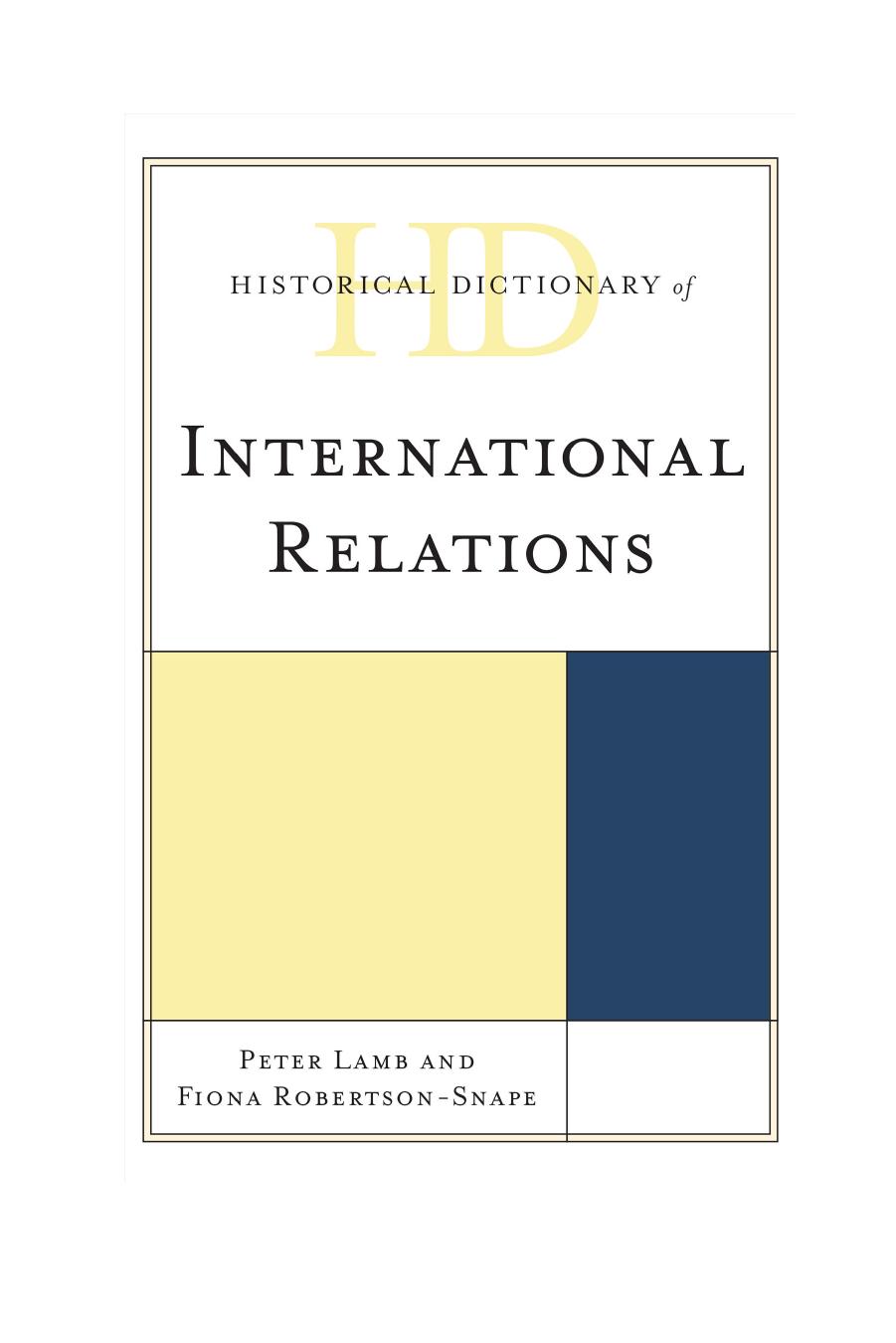Historical Dictionary of International Relations by Peter Lamb Fiona Robertson-Snape

Author:Peter Lamb,Fiona Robertson-Snape
Language: eng
Format: epub, pdf
Tags: undefined
Publisher: Rowman & Littlefield Publishing Group, Inc.
Published: 2012-03-15T00:00:00+00:00
MARSHALL PLAN
Europe was devastated by World War II; the Marshall Plan was the means through which the United States aided Europe’s reconstruction. George C. Marshall, U.S. secretary of state, made a speech at Harvard University in 1947 where he proposed his plan to provide stability in Europe. He emphasized the importance of a return to “normal economic health in the world, without which there can be no political stability and no assured peace.” The United States was to assist Europe, demonstrating its leadership in the creation of the postwar liberal order. The Marshall Plan was part of U.S. policy to restrict the spread of communism. By strengthening its allies in Europe, the United States hoped to contain the emerging communist threat from the Soviet Union. The U.S. government therefore provided $11.8 billion in grants and $1.5 billion in loans to assist in the rebuilding of European economies and national infrastructure between 1948 and 1952. It was available to all European states, including the Soviet Union and Eastern European states. However, conditions attached to the aid—such as the liberalization of economies and free trade—meant that the Eastern bloc could not accept the offer. The Soviet Union considered the United States’ decision to implement the plan despite objections from the East as evidence of its willingness to divide Europe. The Marshall Plan therefore contributed to the drawing of what British prime minister Winston Churchill had described as the “iron curtain” descending across Europe. The strong leadership of the United States in aiding the reconstruction of Europe strengthened its relations with Western European states, facilitated the creation of the North Atlantic Treaty Organization, and identified the United States as the leader of the Western alliance with hegemonic power within the western hemisphere throughout the ensuing Cold War.
See also ; ; ; ; .
Download
Historical Dictionary of International Relations by Peter Lamb Fiona Robertson-Snape.pdf
This site does not store any files on its server. We only index and link to content provided by other sites. Please contact the content providers to delete copyright contents if any and email us, we'll remove relevant links or contents immediately.
| Anthropology | Archaeology |
| Philosophy | Politics & Government |
| Social Sciences | Sociology |
| Women's Studies |
The Secret History by Donna Tartt(18840)
The Social Justice Warrior Handbook by Lisa De Pasquale(12141)
Thirteen Reasons Why by Jay Asher(8791)
This Is How You Lose Her by Junot Diaz(6778)
Weapons of Math Destruction by Cathy O'Neil(6139)
Zero to One by Peter Thiel(5684)
Beartown by Fredrik Backman(5594)
The Myth of the Strong Leader by Archie Brown(5421)
The Fire Next Time by James Baldwin(5246)
How Democracies Die by Steven Levitsky & Daniel Ziblatt(5127)
Promise Me, Dad by Joe Biden(5087)
Stone's Rules by Roger Stone(5026)
100 Deadly Skills by Clint Emerson(4840)
A Higher Loyalty: Truth, Lies, and Leadership by James Comey(4840)
Rise and Kill First by Ronen Bergman(4701)
Secrecy World by Jake Bernstein(4640)
The David Icke Guide to the Global Conspiracy (and how to end it) by David Icke(4624)
The Farm by Tom Rob Smith(4434)
The Doomsday Machine by Daniel Ellsberg(4415)
